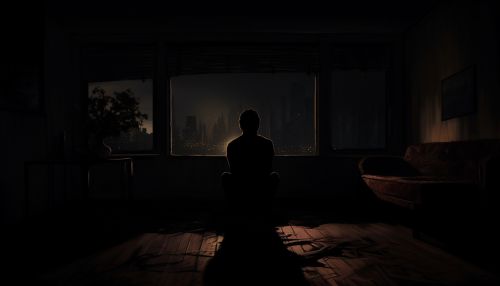Anxiety
Definition and Overview
Anxiety is a psychological and physiological state characterized by cognitive, somatic, emotional, and behavioral components. These components combine to create an unpleasant feeling that is typically associated with unease, fear, or worry. Anxiety is a normal part of life and can be beneficial in some situations. It can alert us to dangers and help us prepare and pay attention. Anxiety disorders differ from normal feelings of nervousness or anxiousness and involve excessive fear or anxiety.
Types of Anxiety Disorders
Anxiety disorders can be classified into several more specific types. The most common are briefly described below.
Generalized Anxiety Disorder (GAD)
GAD is characterized by chronic anxiety, exaggerated worry and tension, even when there is little or nothing to provoke it.
Obsessive-Compulsive Disorder (OCD)
OCD is characterized by recurrent, unwanted thoughts (obsessions) and/or repetitive behaviors (compulsions). Repetitive behaviors such as hand washing, counting, checking, or cleaning are often performed with the hope of preventing obsessive thoughts or making them go away.
Panic Disorder
Panic Disorder is characterized by unexpected and repeated episodes of intense fear accompanied by physical symptoms that may include chest pain, heart palpitations, shortness of breath, dizziness, or abdominal distress.
Post-Traumatic Stress Disorder (PTSD)
PTSD is an anxiety disorder that can develop after exposure to a terrifying event or ordeal in which severe physical harm occurred or was threatened.
Social Phobia (or Social Anxiety Disorder)
Social Anxiety Disorder, also known as social phobia, is characterized by overwhelming anxiety and excessive self-consciousness in everyday social situations.
Causes of Anxiety
Anxiety disorders are caused by a complex set of risk factors, including genetics, brain chemistry, personality, and life events. It's not clear why some people have anxiety disorders and others don't.


Symptoms of Anxiety
Anxiety disorders are characterized by a variety of symptoms. One of the most common is excessive, ongoing worry and tension. An unrealistic view of problems, restlessness or a feeling of being "edgy," irritability, muscle tension, headaches, sweating, difficulty concentrating, nausea, the need to go to the bathroom frequently, tiredness, trouble falling or staying asleep, trembling, and being easily startled are also common.
Diagnosis of Anxiety
The diagnosis of anxiety disorders is complex and involves a thorough evaluation of the patient's symptoms, medical history, and possibly a physical examination. It may also include psychological testing and consultation with other medical specialists.
Treatment of Anxiety
Treatment of anxiety disorders often involves a combination of medication and psychotherapy. Cognitive-behavioral therapy (CBT) is a type of psychotherapy that can be effective in treating anxiety disorders. Medications, such as antidepressants and benzodiazepines, can also be used to manage symptoms.
Living with Anxiety
Living with an anxiety disorder can be challenging and often requires long-term treatment. However, with the right treatment plan, most people with anxiety disorders can lead normal, fulfilling lives.
